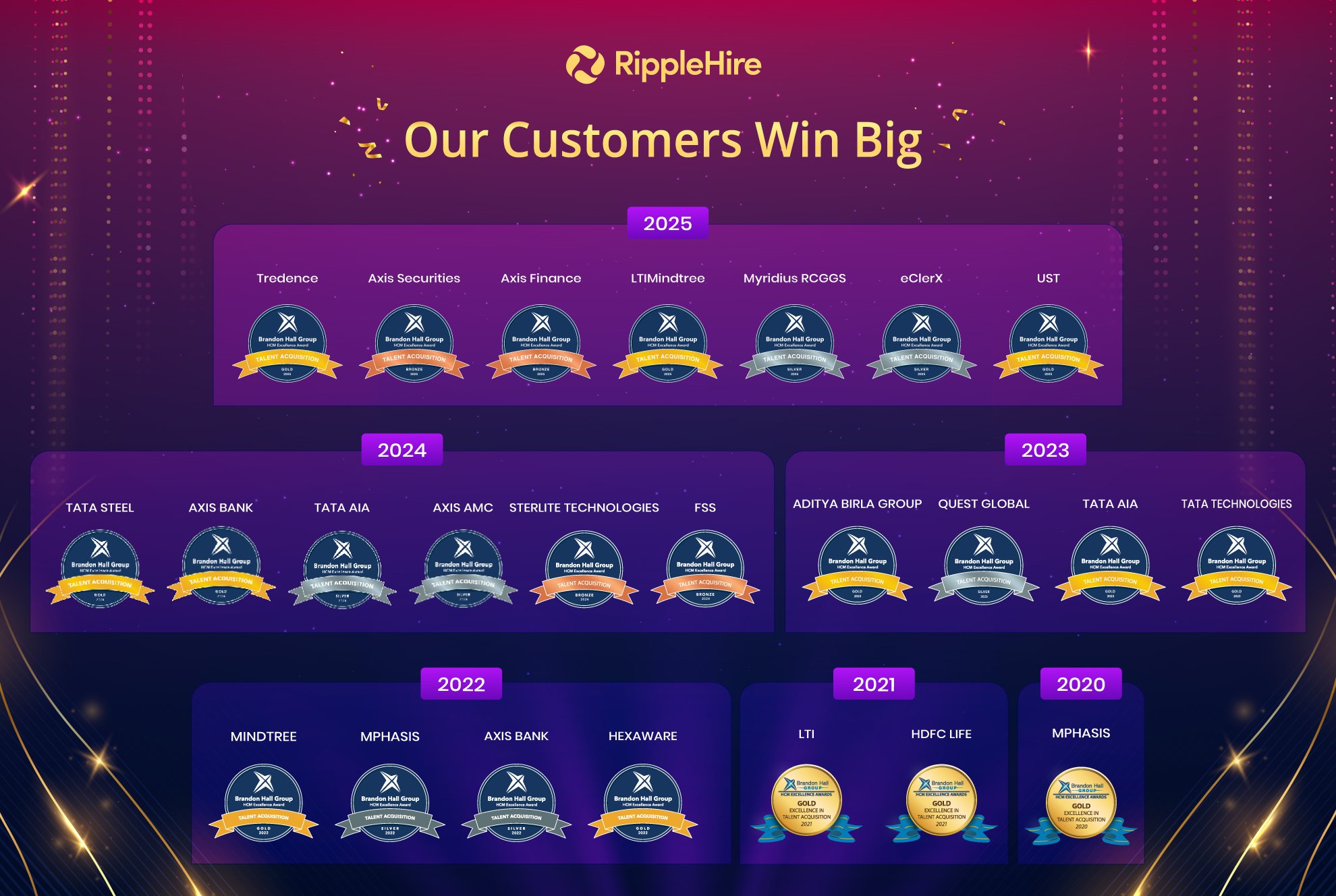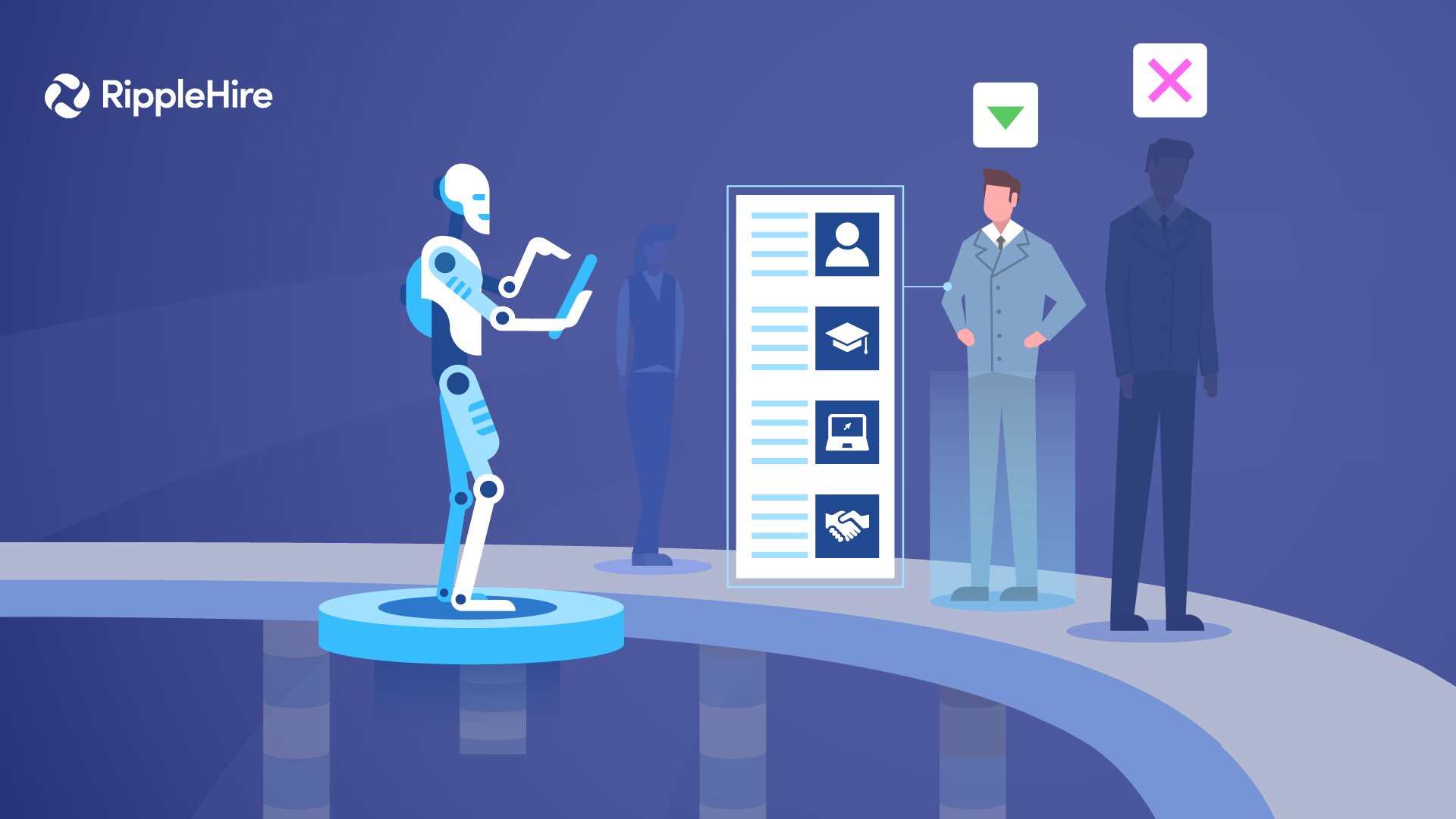How To Align Recruiters And Hiring Managers Before Your Next Hiring Drive
Recruiters and hiring managers both share the same goal—finding exceptional talent—but their approaches often clash.
Recruiters focus on pipeline velocity and candidate experience, while hiring managers prioritize cultural fit and technical precision. These differing priorities can create friction, leading to missed deadlines, frustrated stakeholders, and lost top talent.
In this blog, we'll show you how to align recruiters and hiring managers before doing a hiring drive. You'll discover the common friction points that derail recruitment efforts and learn how to create seamless collaboration between these critical stakeholders.
The four pillars of pre-drive alignment
Successful hiring drive alignment isn't achieved through good intentions alone. It requires a systematic approach. There are four critical pillars that form the foundation of recruiter-hiring manager alignment:
Pillar 1: Role clarity and expectations setting
The biggest source of recruiter-hiring manager friction stems from unclear role definitions. A hiring manager tells a recruiter they need someone with "good communication skills and relevant experience." The recruiter sources candidates with 3-5 years of experience who can articulate their thoughts well. However, the hiring manager rejects them all because they were actually looking for someone with client-facing presentation experience and 7+ years in a specific industry vertical.
This miscommunication happens more often than you'd think. Hiring managers and recruiters frequently have different interpretations of the same job requirements. The solution lies in creating what we call a "Role Alignment Document" during your pre-drive preparation phase.
Creating your Role Alignment Document involves three key conversations:
- Must-have versus nice-to-have skills discussion: Separate absolute requirements from wishlist items. For example, "Java programming" might be non-negotiable while "blockchain experience" could be a nice-to-have.
- Experience range boundaries: Define minimum and maximum experience levels, including exceptions you'd consider for exceptional candidates.
- Cultural fit indicators: Identify specific behavioral traits and values that matter most for your team dynamics.

The magic happens when both parties document these agreements in writing. Verbal discussions get forgotten or misremembered, but a shared document becomes your north star throughout the hiring process. Smart organizations even include compensation ranges, reporting structures, and growth opportunities in this document to prevent surprises later.
Companies that invest time in thorough role clarity see immediate benefits. Their recruiters spend significantly less time sourcing irrelevant candidates, and hiring managers provide faster feedback because they're evaluating against pre-agreed criteria. The candidate experience improves too as people appreciate clear expectations and faster decision-making.
Without this foundation, hiring drives become exercises in frustration. Recruiters feel like they're shooting in the dark, constantly receiving vague feedback like "not quite right" or "missing something." Hiring managers grow impatient with what they perceive as poor candidate quality, leading to longer cycles and potentially losing great talent to competitors who move faster.
Pillar 2: Communication cadence and feedback protocols
Nothing derails a hiring drive faster than communication breakdowns. Recruiters submit profiles and hear nothing for days, while hiring managers wait for updates on candidate pipeline strength. This silence creates frustration on both sides and slows down the entire process.
The key lies in establishing clear communication rhythms before your hiring drive begins. This means agreeing on specific touchpoints throughout the week—perhaps a Monday morning pipeline review and a Thursday feedback session. These aren't lengthy meetings but focused 15-minute check-ins that keep everyone aligned.
Response time expectations need to be realistic and documented:
- Initial candidate profile reviews: 48 hours maximum
- Interview feedback submission: 24 hours after completion
- Final hiring decisions: 72 hours after final interviews
- Pipeline updates and urgent requests: Same-day response
Feedback quality matters as much as timing. Generic responses like "not a good fit" don't help recruiters improve their sourcing. Instead, establish feedback templates that capture specific concerns: technical skills gaps, communication style mismatches, or experience level issues. This structured approach helps recruiters adjust their search strategy quickly.
Escalation procedures become crucial during high-volume hiring drives. When urgent decisions arise — like a top candidate receiving competing offers — both parties need to know exactly who to contact and how quickly decisions can be made. Some organizations designate specific "decision hours" when hiring managers commit to being available for urgent calls.
Regular communication rhythms also help identify potential bottlenecks early. If multiple hiring managers consistently miss feedback deadlines, it signals a capacity issue that needs addressing before it impacts the entire drive.
Pillar 3: Shared success metrics and accountability
Traditional hiring setups create an us-versus-them mentality where recruiters and hiring managers optimize for different outcomes. Recruiters focus on submission numbers while hiring managers prioritize perfect candidate matches. This misalignment leads to wasted effort and blame games when targets aren't met.
The solution involves creating shared KPIs that both parties contribute to achieving. When recruiters and hiring managers succeed or fail together, collaboration naturally improves. Here are the metrics that matter most:
- Time-to-interview: Measures how quickly candidates move from submission to first interview
- Interview-to-offer ratio: Tracks the percentage of interviewed candidates who receive offers
- Offer acceptance rate: Shows how many candidates actually join after receiving offers
- Candidate quality scores: Joint evaluation of how well candidates meet predefined criteria

These metrics work because they require both parties to perform well. A recruiter can't achieve good time-to-interview without hiring manager responsiveness. Similarly, hiring managers can't maintain high offer acceptance rates without recruiter support in candidate experience and expectation management.
Monthly scorecards should be shared transparently between both functions. When numbers dip, instead of pointing fingers, teams can analyze root causes together. Maybe slow time-to-interview stems from unclear job requirements, or low offer acceptance rates indicate compensation misalignment. Shared accountability transforms problems into collaborative solving opportunities, making hiring drives more effective and less stressful for everyone involved.
Pillar 4: Process standardization and tools alignment
Recruiters are tracking candidates in one system while hiring managers use spreadsheets to evaluate them. Interview questions vary dramatically between different managers, and feedback gets lost in email chains. This operational chaos is surprisingly common during hiring drives, creating confusion that slows everything down.
Process standardization eliminates these inefficiencies by ensuring everyone follows the same playbook. The foundation starts with unified candidate tracking systems where both recruiters and hiring managers can see real-time updates, interview schedules, and feedback history. When everyone operates from the same dashboard, miscommunication drops dramatically.
Key standardization elements include:
- Interview guide templates: Consistent questions that assess the same competencies across all candidates
- Evaluation scorecards: Standardized rating scales that make candidate comparisons meaningful
- Feedback formats: Structured templates that capture specific, actionable insights
- Decision-making workflows: Clear steps from initial screening to final offer approval
Tool alignment goes beyond just shared systems. Both parties need training on how to use these tools effectively and efficiently. Some organizations designate "tool champions" who help troubleshoot issues and ensure consistent usage across teams.
The benefits compound over time. Standardized processes create reliable data that helps identify bottlenecks and improvement opportunities. They also make it easier to scale hiring drives up or down based on business needs. New team members can jump in quickly because the processes are documented and consistent, rather than relying on tribal knowledge that differs between managers.
Common pre-drive alignment mistakes that sabotage hiring success
Even well-intentioned teams can derail their hiring drives by making avoidable mistakes during the preparation phase. These missteps create the very friction points that proper alignment is meant to prevent.
The "we'll figure it out as we go" approach ranks as the biggest mistake organizations make. Leaders assume that experienced recruiters and hiring managers will naturally sync up once the hiring drive begins. This wishful thinking leads to mid-process conflicts when expectations clash and deadlines loom. By then, damage to team relationships and candidate experience has already occurred.
Another critical error involves creating alignment documents that sit unused after the initial meeting. Teams spend hours crafting detailed role descriptions and communication protocols, then promptly forget about them when actual hiring begins. These documents become shelf-ware unless teams actively reference and update them throughout the drive.
Additional mistakes to avoid:
- Over-engineering the process: Creating unnecessarily complex workflows that slow decision-making
- Excluding key stakeholders: Leaving out senior hiring managers or HR business partners who influence final decisions
- Setting unrealistic timelines: Agreeing to impossible deadlines that guarantee failure and frustration
- Ignoring past hiring data: Failing to learn from previous drives and repeating the same mistakes

The "one-size-fits-all" mentality also creates problems. Teams often apply the same alignment approach across all roles, ignoring that technical positions require different evaluation criteria than sales roles. Senior executive hires need different timelines and stakeholder involvement compared to entry-level positions.
How RippleHire simplifies recruiter-hiring manager alignment
The four pillars of alignment become much easier to implement when you have the right technology foundation. RippleHire's AI-powered ATS eliminates the common friction points between recruiters and hiring managers through intelligent automation and unified workflows.
Our platform creates a single source of truth where both recruiters and hiring managers access the same candidate information, interview feedback, and hiring progress updates. No more email chains or scattered spreadsheets that create confusion and delays.
RippleHire streamlines alignment through:
- Unified candidate tracking that gives real-time visibility to all stakeholders
- Standardized evaluation workflows that ensure consistent candidate assessment
- Automated feedback reminders that keep communication flowing smoothly
- Shared dashboard analytics that track joint success metrics
Leading enterprises like Axis Bank, Mphasis, and HDFC Bank use RippleHire to coordinate their hiring drives across multiple locations and teams. They've achieved 4.8/5 candidate experience scores while reducing time-to-hire significantly.
The platform integrates seamlessly with your existing HRMS systems like Workday, SAP, and Oracle, ensuring that alignment improvements don't require major technology overhauls. Your teams can start collaborating more effectively from day one.
If you'd like to transform your hiring drives from coordination challenges into streamlined operations where recruiters and hiring managers work as unified teams, talk to use. Let us show you how RippleHire can help. Book a demo here →
Frequently Asked Questions
-
What causes the most friction between recruiters and hiring managers?
The biggest source of friction comes from unclear role definitions and expectations. Hiring managers often give vague requirements like "good communication skills," while recruiters interpret this differently than intended.
Without a detailed Role Alignment Document that separates must-have from nice-to-have skills, recruiters spend time sourcing irrelevant candidates while hiring managers get frustrated with poor candidate quality.
-
How often should recruiters and hiring managers communicate during a hiring drive?
Establish regular communication rhythms before the drive begins. Schedule focused 15-minute check-ins twice weekly - perhaps Monday morning pipeline reviews and Thursday feedback sessions.
Set clear response time expectations: 48 hours for initial candidate reviews, 24 hours for interview feedback, and 72 hours for final decisions. This prevents communication breakdowns that slow the entire process.
-
What metrics should both recruiters and hiring managers be measured on?
Use shared KPIs that require both parties to succeed together: time-to-interview, interview-to-offer ratio, offer acceptance rate, and candidate quality scores.
When recruiters and hiring managers are accountable for the same outcomes, collaboration improves naturally. Monthly scorecards should be shared transparently, focusing on collaborative problem-solving rather than blame when numbers dip.
-
What should be included in a Role Alignment Document?
Include must-have versus nice-to-have skills, specific experience range boundaries, cultural fit indicators, compensation ranges, and reporting structures.
Have detailed conversations about technical requirements, industry experience needs, and behavioral traits that matter for team dynamics. Document everything in writing since verbal discussions get forgotten or misremembered during busy hiring drives.
-
How can we standardize the evaluation process across different hiring managers?
Create interview guide templates with consistent questions, standardized evaluation scorecards with clear rating scales, and structured feedback formats that capture specific insights.
Use unified candidate tracking systems where both recruiters and hiring managers see real-time updates. Train everyone on the same tools and processes to eliminate confusion from scattered spreadsheets and email chains.
-
What's the biggest mistake teams make when trying to align before hiring drives?
The "we'll figure it out as we go" approach is the biggest mistake. Teams assume experienced professionals will naturally sync up once hiring begins, leading to mid-process conflicts when expectations clash.
Other critical errors include creating alignment documents that sit unused, over-engineering complex workflows, and applying one-size-fits-all approaches across different role types that require different evaluation criteria.
-
How do we handle urgent decisions during high-volume hiring drives?
Establish clear escalation procedures before the drive begins. Designate specific "decision hours" when hiring managers commit to being available for urgent calls about competing offers or time-sensitive decisions.
Document exactly who to contact for urgent situations and how quickly decisions can be made. When top candidates receive competing offers, both parties need to know the immediate response protocol.
-
What technology helps improve recruiter-hiring manager alignment?
Use unified candidate tracking systems that give real-time visibility to all stakeholders, eliminate email chains, and provide shared dashboard analytics for joint success metrics.
Platforms like RippleHire create a single source of truth with standardized evaluation workflows and automated feedback reminders. This eliminates common friction points while ensuring both parties access the same candidate information and progress update
















